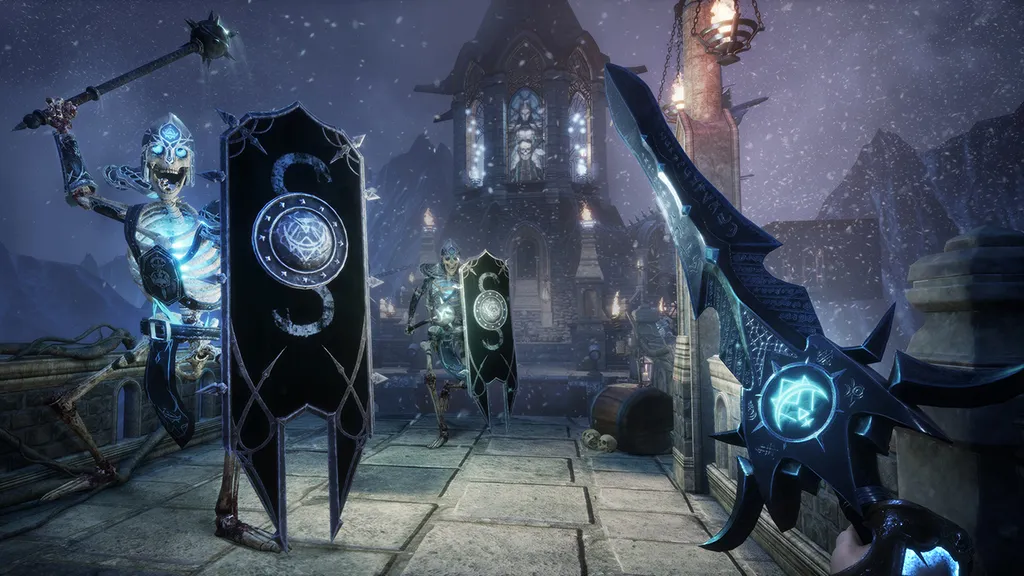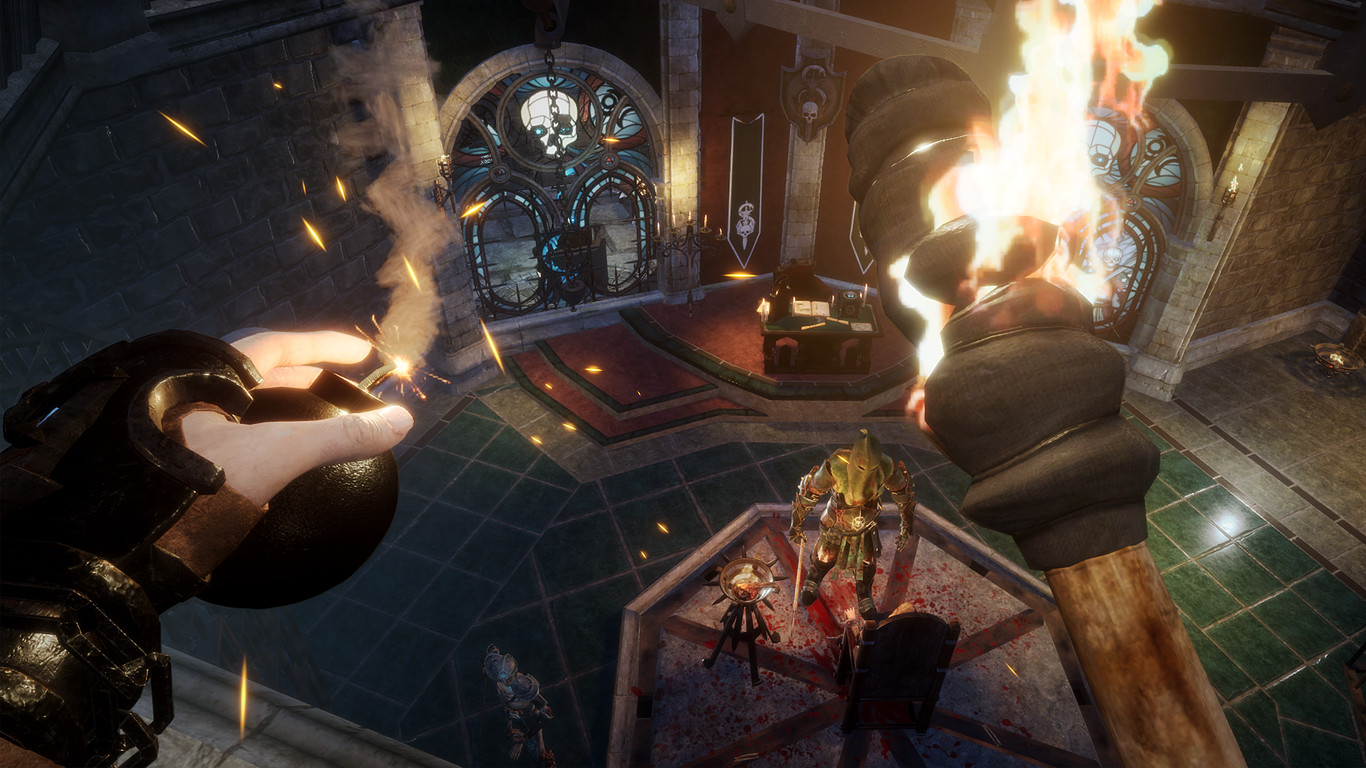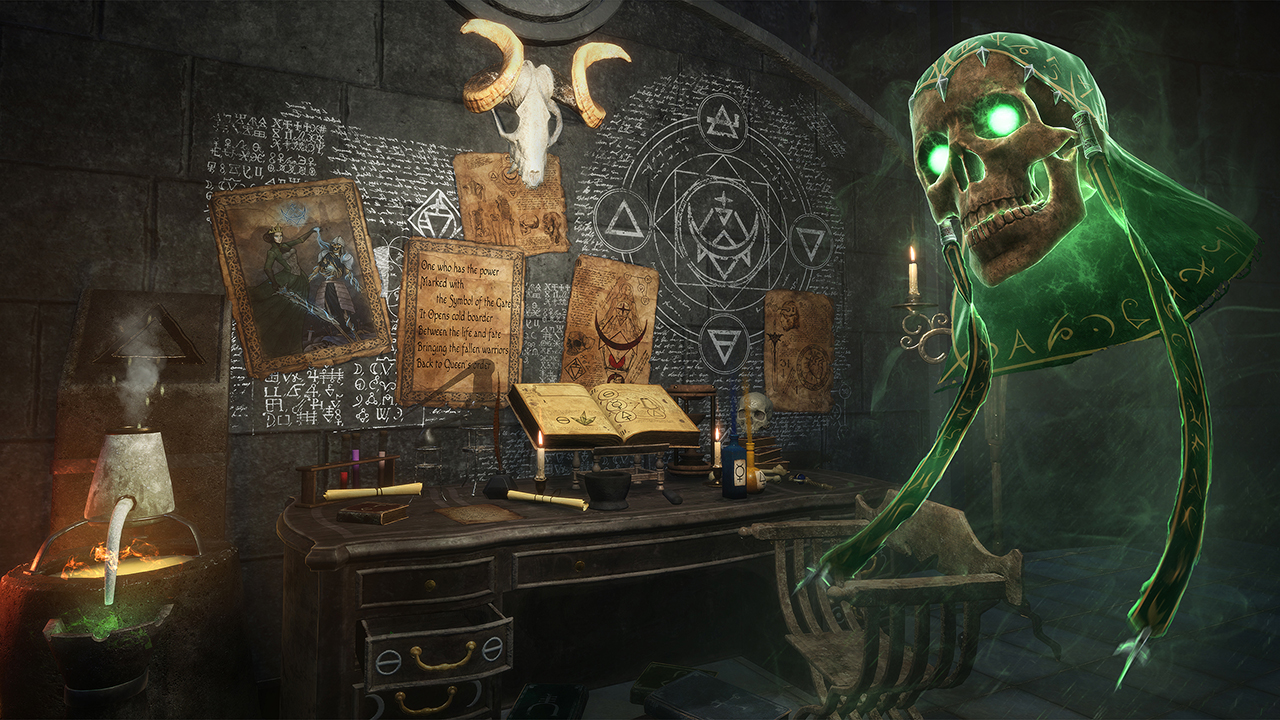I played Witching Tower for the first time at the Seattle VR community’s Halloween party. At the time, it struck me as a fun adventure game with the slight problem that, due to a lack of in-game turning, everyone who played it ended up mummified with their own controller cords within the first ten minutes. The game’s producer had to hang out nearby and occasionally pause the demo so she could unwrap people, because the only way to turn around in-game was to actually turn around.
Fortunately, a patch on Halloween added 45-degree snap turning to Witching Tower, which also removed my biggest complaint about the game. There are a few things that I wish it did differently, but in that, it feels a bit like it’s ahead of its time rather than simply flawed. If you’re looking for a challenging, spooky VR title, albeit one that’s still decidedly on the PG-13 end of the scale, this is a solid enough pick.
You play Witching Tower as Anna Holand, a young woman with a magical gift who’s been locked up in the prison tower of a mad queen. She locked you in the same room as a friendly spirit, however, and with its help, you manage to break out of your cell. From there, you need to take on monsters, find your way past obstacles, and solve the occasional puzzle in order to escape.
In short, it’s the sort of kid-spooky action-adventure game that was reasonably common once upon a time on the PC, but it’s in virtual reality, with appropriate concessions made to the format. You can climb walls, search through shelves, pick things up to inspect them, throw random objects around, and as you get further into the depths of the tower, fight your way through a procession of dangerous undead.
The combat’s a tricky subject. On the one hand, every enemy in the game is fairly simple, with a basic attack pattern and a relatively narrow patrol ground. To fight them, you can equip melee weapons by yanking them off your belt, then kind of wave them in the enemy’s general direction until they die. It’s entry-level stuff, but the enemies are appropriately gross and visceral. Many of them also have a habit of jumping back after they hit you, which means it’s not just a question of wildly swinging at them until they fall over since you actually have to pursue them and move around a bit.
That said, the combat system does feel like it’s harder than it has to be because this is a teleport-to-move game. Running away from a bad encounter or moving up to hit an enemy that just withdrew are both surprisingly difficult, which adds a touch of artificial challenge to the proceedings. The ranged combat’s also maddeningly imprecise, and while the bow feels good to use, it also requires a lot of practice before you stop shooting arrows over your target’s shoulder. It’s doubly frustrating when you’re up against enemies with their own bows, because they’re perfectly accurate unless you manage to use a fence or railing to your advantage; they’ll keep plinking away at you despite all their arrows sticking in the same piece of the environment, which lets you shoot back through gaps.
Your inventory is kept on a pouch strapped to your character’s left wrist, as well as a tool belt strapped around your waist, where your various weapons are kept until they’re needed. Some weapons automatically snap back to your holster point, such as your bow; others don’t, and sometimes you end up dropping them when you meant to simply put them back on your hip. I also had a consistent issue where I’d try to interact with an object with my right hand, and ended up pulling my torch off my belt instead.
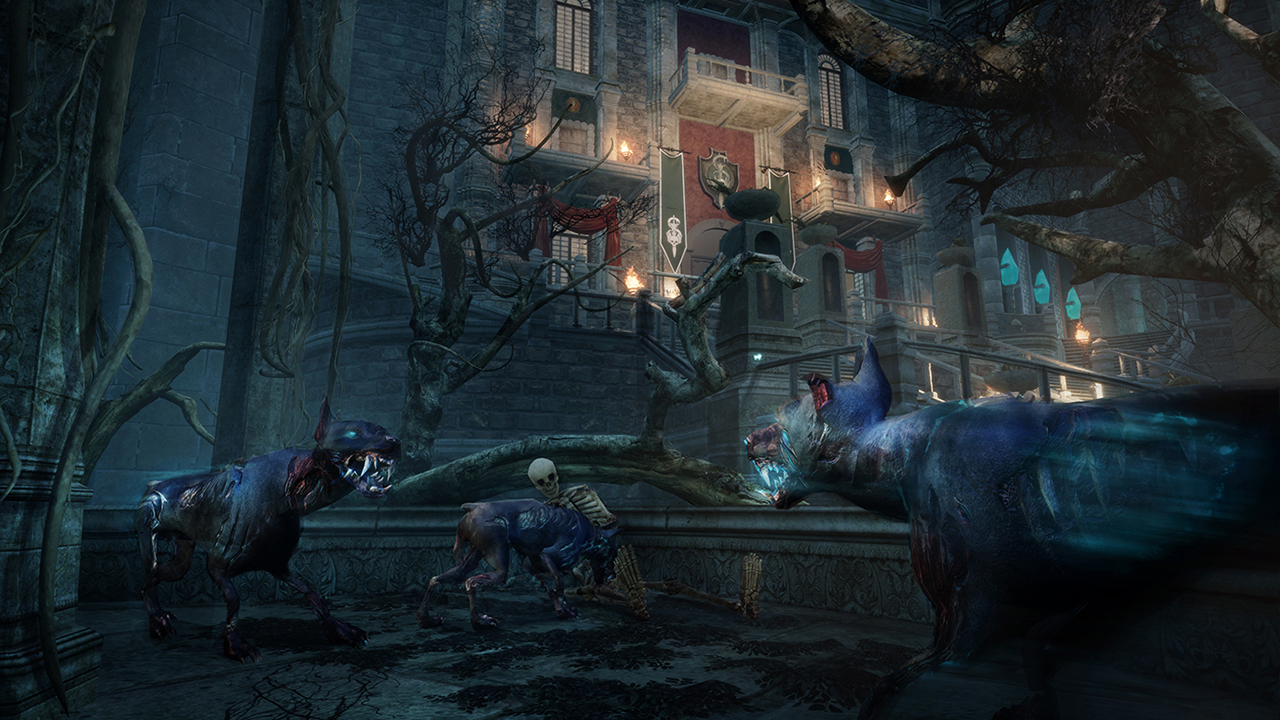
I will give the game credit, however, for having a few genuinely challenging puzzles, as well as a great sense of atmosphere. Your talking skull buddy carries most of the plot on his back, but he never wears out his welcome, which means the tower still feels as vast and foreboding as it ought to. It’s a twisted maze full of old history, bloodstains, and proof of recent violence, with a real sense of being an actual place you happen to be visiting.
There are a few occasions where a puzzle’s particularly discordant—did the designers of this place actually intend for someone to have to solve a maze every time they needed to reach this access panel?—but it all works well as part of the unwelcoming feel of the tower.
Witching Tower reminds me, as I noted above, of casual-audience PC adventure games from the 2000s, of the kind that were sold by the dozen in megastores near the checkout line. That isn’t a bad thing; the puzzles are weird but challenging and fair, the game has a solid Gothic feel that isn’t too over-designed, and it’s only $20.
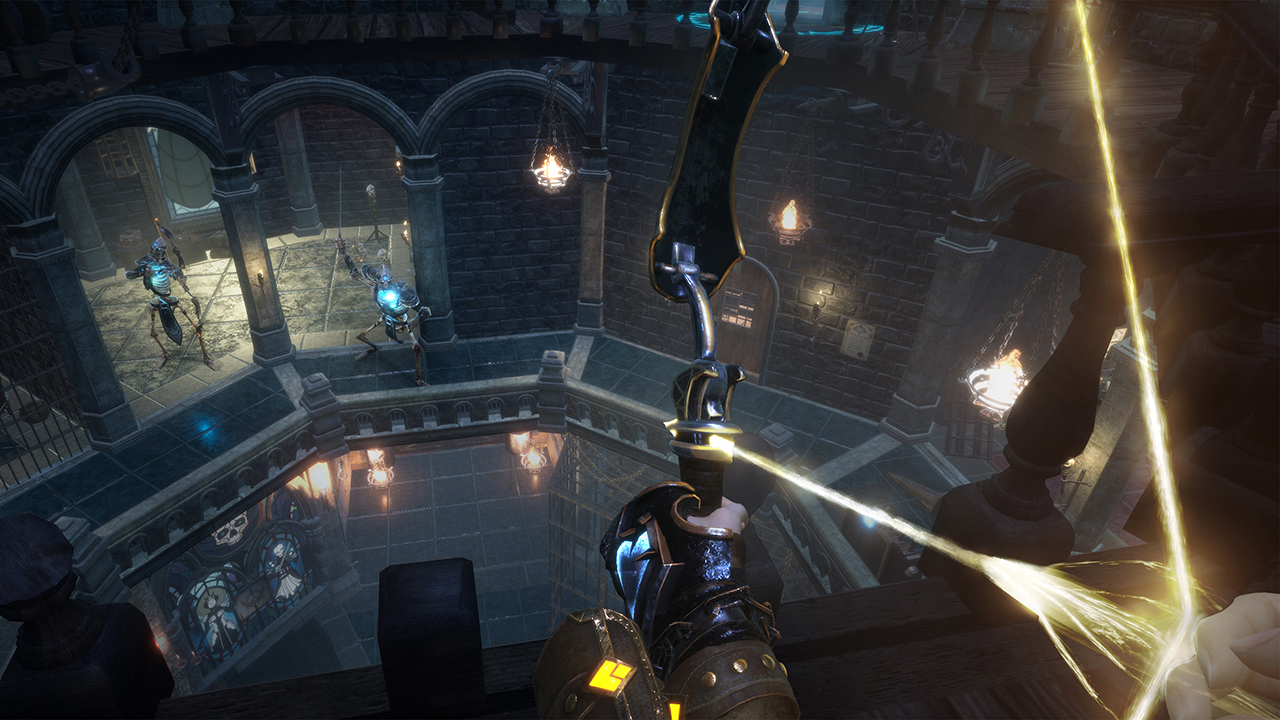
It’s got a few idiosyncrasies with its controls that need to get ironed out, and it would feel better with free movement, but Witching Tower is an okay hack-and-slash bolted on top of a nicely spooky horror-themed adventure. It’s good for a solid, creepy weekend of puzzles, and is likely going to clean up at VRcades.
Witching Tower is available now on Steam for $19.99 Read our Game Review Guidelines for more information on how we arrived at this score.

